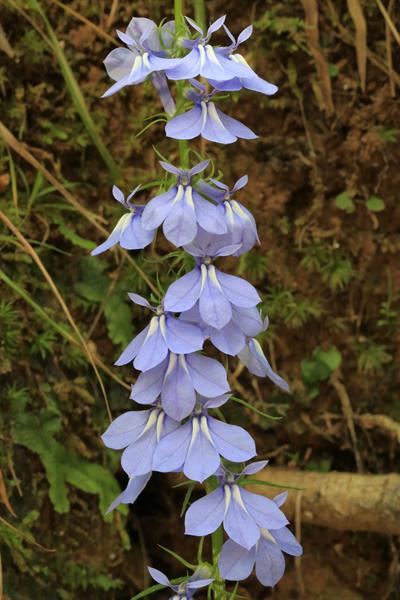
Origin/Endemic status: Endemic
Taxonomy Comments: A number of varieties are sometimes recognized; see synonymy and references.
Synonymy: = Ar, C, Fl7, G, GW2, K4, Mo2, NcTx, Pa, RAB, S, Tat, Tn, Tx, Va, W, WH3, McVaugh (1936a), Spaulding & Barger (2016); = Lobelia puberula Michx. var. puberula – Spaulding & Barger (2016); > Lobelia puberula Michx. – McVaugh (1936a); > Lobelia puberula Michx. – McVaugh (1936a); > Lobelia puberula Michx. var. mineolana – F, K1; > Lobelia puberula Michx. var. pauciflora Bush – K3; > Lobelia puberula Michx. var. puberula – F, K1, K3; > Lobelia puberula Michx. var. simulans – F, Il, K1
Wetland Indicator Status:
- Atlantic and Gulf Coastal Plain: FACW
- Eastern Mountains and Piedmont: FACW
- Great Plains: FACW
- Midwest: FACW
- Northcentral & Northeast: FACW
Heliophily: 8
Hover over a shape, letter, icon, or arrow on the map for definition or see the legend.
 © Grant Morrow Parkins | Original Image ⭷
© Grant Morrow Parkins | Original Image ⭷ © Jim Fowler | Original Image ⭷
© Jim Fowler | Original Image ⭷ © Scott Ward | Original Image ⭷
© Scott Ward | Original Image ⭷ © Alan M. Cressler | Original Image ⭷
© Alan M. Cressler | Original Image ⭷ © Joey Shaw source | Original Image ⭷
© Joey Shaw source | Original Image ⭷ © Bruce A. Sorrie | Original Image ⭷
© Bruce A. Sorrie | Original Image ⭷ © Scott Ward | Original Image ⭷
© Scott Ward | Original Image ⭷Feedback
See something wrong or missing on about Lobelia puberula? Let us know here: (Please include your name and email if at all complicated so we can clarify if needed.)
Cite as...